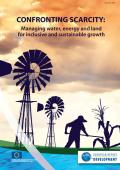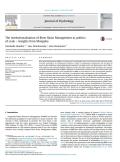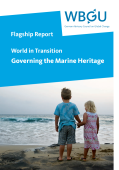This study on innovative sanitation financing recognizes the challenge facing the region, to halve the proportion of the population without access to sanitation by 2015. The study proposes a “paradigm shift” to outcome models, recognizing that sanitation not only remains a focus of international development targets but is also linked to many other development issues such as health, environment, education, gender, disability, tourism and economic growth. This study proposes the inclusion of the private sector in a value proposition, with everyone in society benefiting from improved sanitation, and generating the willingness to pay for these services. ESCAP published this discussion paper, targeted for discussions at the Second Asia-Pacific Water Forum (2APWS), in Chiang Mai, May 2013, to provide background materials for the discussions at both the Technical workshops and the Focus Area Sessions.
More than 90% of impacts of climate change are related to water issues. These impacts are not only on water supply for household, industries and agriculture, but also on disasters and hazards during heavy rainfall, with flooded areas and landslides. During droughts, forest fires and haze have become the norm. The spread of poor quality water during floods and concentration of toxic water during drier months are an added health hazards. as such water security has become a truly global challenge.


River Basin Management (RBM) as an approach to sustainable water use has become the dominant model of water governance. Its introduction, however, entails a fundamental realignment and rescaling of water-sector institutions along hydrological boundaries. Creating such a new governance scale is inherently political, and is being described as politics of scale. This paper analyzes how the politics of scale play out in the institutionalization of RBM in Mongolia. It furthermore scrutinizes the role of the broader political decentralization process in the introduction of RBM, an issue that has so far received little attention. Finally, it assesses whether the river basin is an adequate water management scale in Mongolia.

